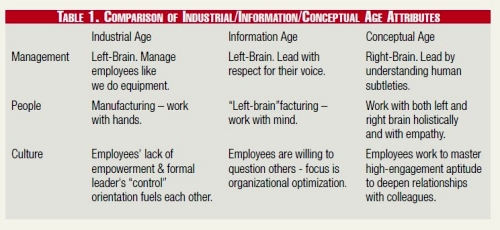Change Management Risk Assessment
Change Readiness Assessments

Risk vs readiness
Change management risk assessment is based on the premise that "organisational risk" is the inverse of "change readiness".
In other words, the more ready the organisation is to change, the lower the risk of failure of the change initiative.
So if we establish some useful means for defining and calibrating change readiness then we can take steps to mitigate the likely causes of failure.
In this section, and the associated pages, we will be looking at a number of tools and methods for conducting "soft" and "hard" Change Readiness Assessments, together with other factors, that enable us to gauge an organisation’s capability of, and receptivity toward, a planned change.
An appropriately selected change readiness assessment tool not only informs an initial change management risk assessment, but it also forms a baseline and be can re-administered to measure progress in change readiness - and thus reduction in change management risk - over time.
Change Management Risk Assessment - Resources
"Soft" change readiness assessment tools
"Hard" change readiness assessment tools
Creating a change readiness culture
Get that knowledge upfront
For a project management based change initiative, these change management risk assessments will help to reduce project risk.
The results of these assessments will shape key areas of the change management strategy and plan - specifically the communication strategy.
However, many companies - particularly in North America - do not stop and evaluate lessons leaned from past change initiatives before launching the next one.
In recent interviews a key piece of advice that John Kotter offers is for organisational leaders to take the time to get themselves informed about what does and doesn't work - before launching into action with a change initiative. As he says:
"If you get that knowledge upfront, it can save you great grief and money later on."
The Context of Change Management Risk Assessment
But before we look more closely at approaches and tools for change readiness assessment we need to be understand the context of change management risk assessment and appreciate the significance of a number of inter-related factors:
- The marginal rate of change is increasing
- The emergence of the flat world and horizontal management
- The importance of the emotional dimension of leadership
- The importance of the informal networks
- The answers are (almost) always at the frontline
- Stuck in Jurassic Park
The marginal rate of change is increasing - and continues to do so
We used to believe that change occurs in cycles and waves that ebb and flow. This may be accurate over long time spans of hundreds of years, but in the present the rate of change is continually increasing and this has a significant impact on any change management risk assessment.
Based on his latest researches, Kotter says:
"Many organisations just can't keep up with the speed of change."
This is profoundly important because it is closely linked to another major and frequently overlooked factor...
The emergence of the flat world and horizontal management
I was tempted to headline this point the "death of command and control" - but that is not strictly true as there will always be situations where there is a need for firm direction and senior management edicts for compliance with the legal requirements related to the management and governance of organisations, and also in crisis situations.
However, in the "horizontal world" we now live in, information is available to all and the current and emergent technology infrastructure coupled with the proliferation of social media channels and tools allows for almost immediate dissemination and comment of gossip, opinion and factual information.
The days when decisions affecting many were taken by a few and then imposed on the many are dying - if for no other reason than people want and expect to be involved and they resist change that is imposed upon them. This is self-evident in the failure of 70% of significant change initiatives.
One of the keys to change management risk assessment lies in understanding the extent to which the change leadership are engaging directly with the "informal organisation" - sometimes referred to as the "shadow organisation" - from the outset - from the planning stage right through to implementation and beyond.
Resources:
Dealing with resistance to change in organisations
The importance of the informal networks

Jon Katzenbach and Zia Khan, Authors of "Leading outside the Lines" make the important point that:
"...leaders at all levels have a difficult time with, or don’t realize they need to address, a key avenue to success: balancing two distinct dimensions of human behavior and organizational performance—the formal and the informal elements.
Learning how to mobilize the informal elements of an organization to accelerate the formal elements goes a long way in helping leaders fill the gap between intention and results."
Neil Farmer - a leading UK change expert and the leader of 5 major and successful UK corporate change initiatives - points out that whilst the formal organisation determines all routine aspects of what takes place, and in so doing provides the necessary "glue" of stability and repeatability, the shadow or informal organisation largely determines the scope and pace of change and is thus a major factor in change management risk assessment:
"Where the shadow and formal organisations come into conflict in a change situation, the balance of influence in the shadow organisation will almost always win the day."
Resources:
Overcoming the disconnects by working with the informal networks
How to achieve peak performance motivation
The answers are (almost) always at the frontline
With the exception of technical, financial and legal issues, the answers to issues relating to successful change planning, change impacts, change implementations and most importantly benefit realisation are to be found at the frontline with those directly involved in "doing it".
In my experience, courtesy and empathic listening to the people at the "coal face" will not only uncover the issues and impacts but will also identify the potential solutions.
Stuck in Jurassic Park
The key for this to happen is for an easing of centralised command and control by the directors and senior management, to enable the change leaders to work in consultation and collaboration with the leaders of the informal networks.
But, this rarely happens...unless organisational leadership are facing a direct exposure to their own interests!
However, as Kotter's observed rate of change gathers momentum these people will be exposed to ever increasing exposures and will either adapt or follow the fate of their Jurassic predecessors...
Resources:
Managing change within "Business as Usual"
A Paradigm Shift
In his latest book "A Whole New Mind - Moving From the Information Age to the Conceptual Age" Daniel Pink suggests that:
"There is a seismic — though as yet undetected — shift now under way in much of the advanced world. We are moving from an economy and a society built on the logical, linear computer-like capabilities of the Information Age to an economy and a society built on the inventive, empathic, big-picture capabilities of what’s rising in its place, the Conceptual Age.
Download - "A Whole New Mind" - Overview (PDF)
The forces driving this shift are globalisation and increasing outsourcing and emergence of lower cost alternatives oveseas, ever increasingly powerful techonologies that render many types of work obsolete, and the deepening desire for non-material personal growth.
The effects of this shift have a direct impact on organisational leadership and management and are directly relevant to change management risk assessment as they are consistent with and have conderable resonance with the increasing understanding and acceptance of the "human dimension" of change that we have already highlighted, and that is illustrated below.

(c) Jim Walters
For a very lucid and brief exploration of what Thomas Friedman ("The World Is Flat: A Brief History of the Twenty-First Century"), Daniel Pink and other informed futuroligists are saying about this and very specifically how it directly relates to change management risk assessment, please read this excellent article by Jim Walters, EdD, CEM, director of customer relations for Rochester Public Utilities:
Readiness: The Missing Link in Organizational Change"
The Parameters
The parameters of change management risk assessment are as follows:
- Legacy assessment
- Present assessment
- Reference points and metrics
- Tools
Legacy assessment
As mentioned above, it is absolute nonsense to contemplate - let alone commence - a change initiative without serious reference to your organisations' history of attempting change.
And yet, perhaps unsurprisingly, so many companies do just that!
As Kotter has said, you need to get that knowledge and insight now, right up front as it can help you repeating past mistakes and failing with this your current initiative.
Change readiness is predicated on your organisation's legacy of change initiatives. The scar tissue of past initiatives is a powerful indicator.
Present assessment
There are 2 aspects to a "present assessment": organisational readiness which we will consider in "Reference points and metrics" below; and individual readiness for change.
Individual readiness for change is more complex than it may appear:
- Who will be assessed for change readiness?
- When will they be assessed?
- How will they be assessed and by what criteria?
Stages of concern
Pat Zigarmi and Judd Hoskstra are organisational change experts and co-authors of Ken Blanchard Companies "Leading People Through Change" programme. They have co-authored an excellent article: "Leadership strategies for making change stick" that is based around the results and findings of a major study conducted by Blanchard in 2008 with over 900 training and HR leaders as to how they approach change:
I entirely support their emphasis on the need for change leadership’s involvement with people at all levels – in other words engaging with, and working through, the informal networks and the informal organisation.
And also, their contention that for change to "stick", leaders have to anticipate, un-cover and address the various layers and levels of concerns as and when they arise, and these have been identified as 6 stages of concerns:
(1) Information concerns - what is the change and why is it needed?
(2) Personal concerns - how will the change affect me personally and will I win or lose?
(3) Implementation concerns - what do I do first and how do I manage all the details?
(4) Impact concerns - is the effort worth it and is the change making a difference?
(5) Collaboration concerns - who else should be involved and how do we spread the word?
(6) Refinement concerns - how can we make the change even better?
It is worth it, because as you will see, there many other excellent short reports available to you once you have registered.
The readiness for change gap
A further dimension is discussed by Jim Walters and that is the "readiness for change gap" between management and non-management employees.
"Readiness: The Missing Link in Organizational Change"
Simply put, the less power and formal influence an employee has the less informed they will be and the greater their range of concerns. Walters' research findings showed that (in the utility sector) there were 3 main gaps between management and non management employees:
(1) Management employees are less ready for change than non-management employees.
(2) A significant difference exists between management and non-management employees' task and impact related concerns for change.
(3) Management employees feel significantly more empowered that non-management employees.
Reference points and metrics in change management risk assessment
Organisational readiness for change is assessed via all of the following:
- Maturity models
- Cultural assessment
- Benefit realisation
- Impact assessment
- Project complexity
Maturity models
One of the major reference points in change management risk assessment is the maturity model. This is my personal working definition of a maturity model:
"A maturity model is a structured representation of the stages of evolution of an organisation, as it transition through various developmental states and stages, in response to the impacts of changes in the organisation's operating environment.
This evolution represents progress to more developed or advanced states of learning, insight, understanding and practise that support its strategic goals."
You will find detail and extensive resources on this site via the following links:
Project Management Maturity Model
Programme Management Maturity Model
Business Process Management Maturity Model
Change Management Maturity Model
Cultural assessment in change management risk assessment
Organisational culture is the single biggest determinant of how an individual will behave within a business or organisational environment. It will over-ride education, intelligence and common sense. Therefore it needs to be an integral aspect of any change management risk assessment.
Further details here:
Cultural mapping and analysis is a critical aspect of change management risk assessment.
Benefit realisation in change management risk assessment
One of the many reasons that I advocate using a programme management based approach to change is that it focuses on the realisation of benefits.
Any change initiative that does not have clearly defined benefits supported by a benefit realisation plan runs yet another significant and common risk of failure.
This is often occurs where there is a project management driven change initiative, and it occurs because the focus of change management risk assessment is on the delivery of the new capability. This frequently causes change managers to overlook the need to implement plans to ensure that the defined organisational benefits are realised.
Full details here:
The pre-programme review and planning process
Practical approaches to implementing change that deliver results and reap the benefits
Impact Assessment
The failure - by change leaders - to identify and take full account of the impact of a change initiative on those people who will be most impacted by it is another major reason for change failure and thus another significant component of change management risk assessment.
A thorough stakeholder mapping and analysis is a key component of the programme based approach to managing a change initiative.
However, as Pat Zigarmi and Judd Hoskstra of Blanchard's say:
"Bottom line – people who plan change rarely implement the plan."
But there is a deeper dimension to this:
"People don't want to be sold on change, they want to understand it and participate in making it happen" according to Pat Zigarmi.
"They want to know what the leaders see in regard to needed change within the organisation and the priority with regard to other things going on.
They want to be asked 'what works; what doesn't'. If they are asked they will provide valuable guidelines and become part of the process" she explains.
This is an integral aspect of:
The pre-programme review and planning process
Project complexity
For change initiatives that comprise one or more projects and that will be delivered within a project management framework, project complexity is another significant aspect of change management risk assessment.
Statistically the size of the project, the scope of project and the duration of the project all contribute to project complexity and increased risk. See this brief summary:
Two other important perspectives are your organisations legacy with projects which will be reflected in your organisation's level of project management maturity all of which can simply be stated as your organisational capability.
Change Management Implementation - Assessing Change Readiness
Change Equation - INPACT Assessment
Leadership Qualities - Creating a Change Readiness Culture
Return to top of "Change Management Risk Assessment"







